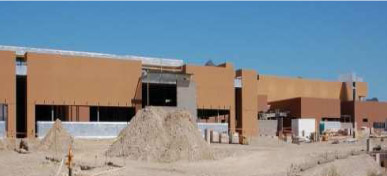Press release, U.S. Department of the Interior
Tag: President Obama
NCAI President On Five Promise Zones: This Is The First Step In Realizing The Potential Of Indian Country
Native Leaders Air Concerns at White House Tribal Nations Conference
By: Rob Capriccioso, Indian Country Today Media Network, November 14, 2013
The true potential of the Obama administration’s White House Tribal Nations Conference – now in its fifth year – was on display November 13 when tribal leaders were finally invited to publically criticize and question federal agency shortcomings on decisions affecting American Indian citizens.
At past conferences tribal leaders often felt frustrated that their concerns were only allowed to be offered behind closed doors and were sometimes limited to being in writing due to time constraints. Those realities led to less accountability and transparency from the administration on tribal matters, several leaders at this conference said, resulting in negative budget consequences for tribes and harm to tribal sovereignty.
Some tribal leaders have felt so stifled and controlled at previous Obama administration meetings that some who attended in the past chose not to attend this year. Edward Thomas, president of the Central Council of Tlingit and Haida Indian Tribes of Alaska, said he was concerned this conference would turn into another “photo op and publicity staged event as opposed to one where we have the opportunity to tell [the president] directly that his team in not carrying out his promises to Native Americans,” so Thomas cancelled his plans to be there. Several tribal leaders have expressed distress to the administration about the costs of travelling to Washington, D.C. for events where Indian objectives receive little attention beyond lip service.
Tribal leaders say there have been very real consequences to the past tight administrative control of these conferences. American Indian nations have often been portrayed in mainstream press reports about these conferences as mindless cheerleaders of the administration’s policies, with their criticism left without widespread attention. The reality is that many Democratic tribal leaders are strongly supportive of the president and his team, but there is a wide divergence in the beliefs of even Democratic tribal leaders when it comes to how the administration has treated tribes.
Diane Enos, president of the Salt River Pima-Maricopa Indian Community, noted in a rare public question-and-answer session with agency officials this year that there is deep mistrust among Indian citizens of the federal government due to historical injustices, so it is “scary for tribal nations to be asked to cooperate with the federal government” even given an administration that has done some positive things for tribes, including achieving a stronger tribal Violence Against Women Act and a permanently reauthorized Indian Health Care Improvement Act.
RELATED: President Barack Obama’s VAWA Law Signing Spotlights Native Women Warriors
Throughout the day-long conference this year, both in closed sessions and in ones open to the press, tribal leaders pummeled administration officials with concerns, especially regarding a plan by the administration to cap contract support costs (CSC) reimbursements to tribes, despite Supreme Court rulings calling for reimbursement. Tribal leaders said the Departments of Health and Human Services and Interior have both shirked responsibility on paying CSC settlements owed to tribes. Beyond CSC, tribal leaders balked over lacking federal support for Indian education, initiatives by the IRS to unjustly tax tribes, and the administration’s support of budgetary sequestration on tribal money that is supposed to be protected as part of the trust and treaty responsibilities the federal government has committed to tribes.
RELATED: Sen. Begich Urges Obama’s Attention on Plan to Cheat Tribal Health Costs
“We need our trustee to be worthy of our trust,” Brian Cladoosby, newly elected President of the National Congress of American Indian and chairman of the Swinomish Indian Tribal Community, told agency officials sitting on the new White House Council on Native American Affairs at one point in the day. Other tribal leaders lamented publicly that the council needs an Indian-focused director to guide its often-unwieldy work, and they said they wished the council included Native Americans because it seems paternalistic that it does not.
RELATED: Brian Cladoosby Is President National Congress of American Indians
RELATED: Obama Creates Native Council To Improve Dialogue with Indian Country
If agency leaders were unaware that tribes have multiple problems with the administration’s decisions on tribal matters before the event, they were quite clear by the end of the day. “Today was some tough love, but families need to have those conversations,” Environmental Protection Agency Administrator Gina McCarthy told tribal leaders after hearing their concerns throughout the early portion of the conference.
In response to tough budget and sequestration questions publicly raised by Juana Majel Dixon, a longtime leader with the Pauma Band, Cecilia Muñoz, director of the White House Domestic Policy Council, said the next budget process is underway now, and “everybody has their eye on what’s happening in Indian country.” Dixon responded that Indian country needs to have a Native American leader at the Office of Management and Budget’s table in order to ensure that egregious errors like the CSC cap budget proposal do not happen again.
In all, over 300 tribal leaders, some elected and some leaders of tribal organizations, attended the conference, which President Barack Obama said in an afternoon speech was the most ever for this event.
Obama in the past has used the conference to personally present new tribal initiatives, including an executive order calling for increased agency consultation with tribes and one on Indian education. This year the major news from the president was that he planned to visit Indian country sometime in the next year. He has not visited a reservation since campaigning for president in 2008, which has disappointed many tribal citizens who feel he needs to see with his own eyes the plight of many Indian nations to fully understand the relief that is needed. White House spokesman Shin Inouye said “more details will be released at a later date” regarding the president’s planned trip.
Obama also said he was well aware of tribal concerns. “[T]here’s more we can do to return more control to your communities,” the president said in his speech, adding that he is urging Congress to reauthorize the Native American Housing Assistance and Self-Determination Act and to pass a long-awaited Carcieri fix on land-into-trust issues.
RELATED: Obama: We Should Be Focused on the Work Ahead
“[W]e’ve heard loud and clear your frustrations when it comes to the problem of being fully reimbursed by the federal government for the contracted services you provide, so we’re going to keep working with you and Congress to find a solution,” the president said to major tribal applause. “That’s all going to be part of making sure that we’re respecting the nation-to-nation relationship.”
Tribal leaders at the conference generally said they were happy to hear the president is aware that all is not perfect on the federal-tribal relations front, and that he is willing to do more to right the wrongs.
“I recognize that no sitting United States president has ever reached out to Indian country like we have experienced since President Obama took office in 2008,” said Derek Bailey, who attended the meeting as a member of the National Advisory Council on Indian Education and as a representative of the Inter-Tribal Council of Michigan. “He has never swayed from his pledge to engage Indian country and our tribal leadership and to implement positive American Indian and Alaska Native policies that have been developed through tribal consultation and interaction.”
Read more at http://indiancountrytodaymedianetwork.com/2013/11/14/native-leaders-air-concerns-white-house-tribal-nations-conference-152253
5 takeaways from President Obama’s climate speech
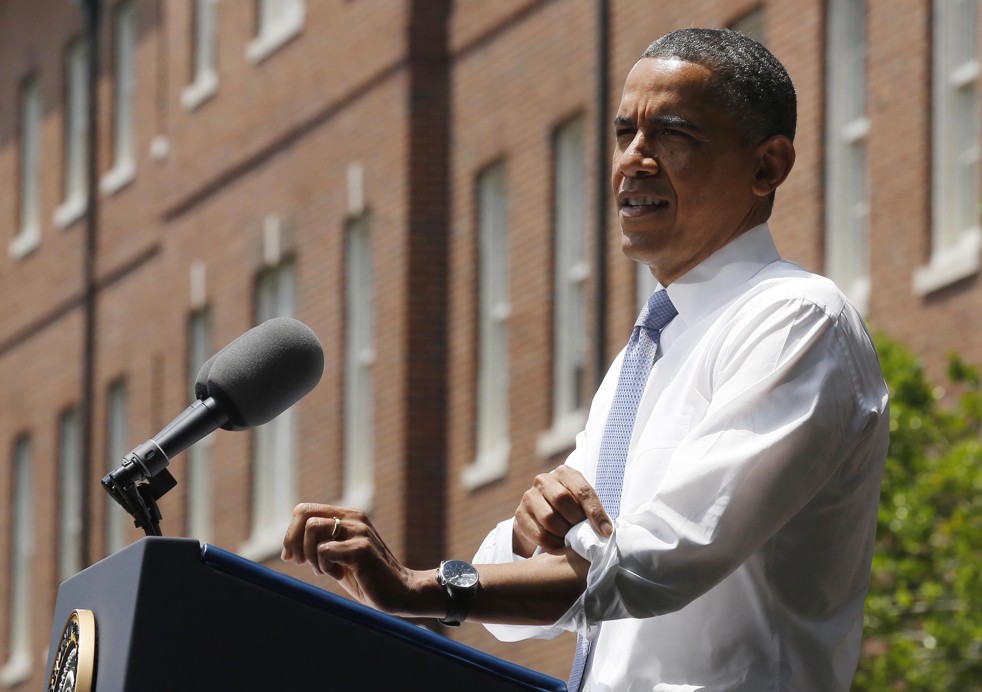
By Juliet Eilperin, The Washington Post
What did we learn from President Obama’s climate speech Tuesday? Here are five takeaways.
1. He won’t duck the climate implications of Keystone XL, even though he may still end up approving it. Obama declared, “Our national interest will be served only if this pipeline does not significantly exacerbate the climate problem.” That means the administration will be analyzing whether approving the project will generate more greenhouse gas emissions than blocking it would. However in its draft environmental impact assessment, the State Department indicated that even if the president denies a permit to TransCanada to build the project, the oil in Alberta may be shipped to the U.S. by rail, leading to comparable emissions. So Obama’s final decision will largely depend on how his deputies crunch the numbers.
2. Electric utilities will face stricter carbon limits, but we won’t know for a year what they will look like. Obama said when it comes to power plants being able to emit unlimited carbon for free: “That’s not right, that’s not safe, and it needs to stop.” But under the timeline he issued today, the Environmental Protection Agency won’t issue a proposed rule on existing power plants until June 2014, and won’t finalize it for another year after that. As American Electric Power’s president and CEO Nick Akins said in an interview after the speech: “So the devil’s still in the details.”
3. The president is willing to demonize climate skeptics. “We don’t have time for a meeting of the Flat Earth society,” the president said, a shot across the bow given the fact that most congressional Republicans question the link between human activity and global warming.
4. The Obama administration will apply the climate test broadly, to decisions ranging from flood insurance to federal road projects. One of the least-trumpted and most significant elements of the new initiative is that the White House will now factor in climate impacts to a host of decisions, including how to construct new projects and rebuild after federal disasters.
5. Obama hopes to secure a few international climate agreements by the end of his second term. It’s not unusual for second-term presidents to focus on foreign policy; Obama made it clear in his speech that it was time for the U.S. “to lead” on climate, by striking a handful of accords on greenhouse gas emissions. That could include a global agreement to phase out hydrofluorcarbons, potent greenhouse gases used in refrigerants and air conditioning, as well as a bilateral climate agreement with China.
Federal appointment for Suquamish Tribe chairman
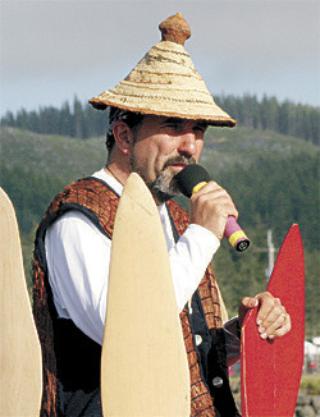
Suquamish Chairman Leonard Forsman … appointed by President Obama to the federal Advisory Council on Historic Preservation.
Source: North Kitsap Herald
SUQUAMISH — President Obama on Wednesday announced his intent to appoint Suquamish Tribe Chairman Leonard Forsman to the federal Advisory Council on Historic Preservation.
The announcement was made Wednesday by the White House Office of the Press Secretary. Forsman said the appointment will not affect his service as Suquamish chairman; the advisory council meets quarterly. It is not a paid position.
The Advisory Council on Historic Preservation (www.achp.gov) is an independent federal agency that promotes “the preservation, enhancement, and productive use of our nation’s historic resources,” and advises the President and Congress on national historic preservation policy.
According to the agency’s website, “The goal of the National Historic Preservation Act, which established the ACHP in 1966, is to have federal agencies act as responsible stewards of our nation’s resources when their actions affect historic properties. The ACHP is the only entity with the legal responsibility to encourage federal agencies to factor historic preservation into federal project requirements.
“… the ACHP serves as the primary federal policy advisor to the President and Congress; recommends administrative and legislative improvements for protecting our nation’s heritage; advocates full consideration of historic values in federal decisionmaking; and reviews federal programs and policies to promote effectiveness, coordination, and consistency with national preservation policies.”
In a statement released by his press secretary, Obama said of Forsman and Margaret W. Burcham, who he intends to appoint to the Mississippi River Commission: “I am confident that these outstanding individuals will greatly serve the American people in their new roles and I look forward to working with them in the months and years to come.”
Forsman has been chairman of the Suquamish Tribe since 2005. He earned a bachelor of arts in anthropology from the University of Washington and a master of arts in historic preservation from Goucher College.
Forsman was director of the Suquamish Museum from 1984 to 1990, and has served on the museum Board of Directors since 2010. He was a research archaeologist for Larson Anthropological/Archaeological Services in Seattle from 1992 to 2003.
He has been a member of the Tribal Leaders Congress on Education since 2005, the Suquamish Tribal Cultural Cooperative Committee since 2006, the Washington State Historical Society board since 2007, and was vice president of the Washington Indian Gaming Association in 2010. He is also a member of the state Board on Geographic Names.
Forsman said, “I want to build on the advisory council’s efforts to recognize and protect those cultural resources that are important to Tribes — the cultural landscape and sacred places that have been neglected — and provide Tribes more resources to protect those places to the best of our ability.”
Increase proposed for Indian Health Service budget
Source: Indian Health Service
President Obama’s proposed fiscal year 2014 budget authority for the Indian Health Service includes a 2.9 percent increase. The proposed IHS budget appropriation request is $4.4 billion. This is a $124 million increase over the FY 2012 appropriation. Tribal consultation is fundamental to the IHS budget process, and the proposed budget incorporates tribal priorities and recommendations.
The budget request supports and expands the provision of health care services and public health programs for American Indians and Alaska Natives. It includes these approximate increases:
- $35 million to help purchase health care from the private sector through the Contract Health
Services program, which is under proposal to be called the Purchased/Referred Care program.
- $77.3 million to support staffing and operating costs at new and replacement facilities
- $5.8 million to fund contract support costs incurred by tribes in managing their own health programs.
If the proposed budget is enacted, the IHS discretionary budget will have increased 32 percent since FY 2008. The IHS FY 2014 proposed budget is available online at: http://www.ihs.gov/BudgetFormulation/index.cfm?module=dsp_bf_congressional.
The IHS, an agency in the U.S. Department of Health and Human Services, provides a comprehensive health service delivery system for approximately 2.1 million American Indians and Alaska Natives who are members of federally recognized tribes.
A Monumental Day
Not a single dissenting voice was heard when community meetings were called to discuss making Rio Grande del Norte into a national monument, according to Taos Mayor Darren Córdova.
It should be no surprise, then, that the Taos County Commission Chamber was full to bursting with some 150 residents applauding Monday’s signing of the presidential proclamation declaring the 242,555 acres in Taos and Rio Arriba counties a national monument.
Sen. Tom Udall, D-N.M., hosted that local gathering, while the official signing ceremony itself took place in Washington, D.C. Area residents who joined President Barack Obama in the Oval Office included former U.S. Sen. Jeff Bingaman, who was credited with spearheading the preservation of this land; Sen. Martin Heinrich, D-N.M.; Questa Mayor Esther Garcia; and Taos Pueblo War Chief Samuel Gomez.
“This is a great day for New Mexico,” Bingaman said in a news release. “I’m glad that President Obama found northern New Mexico’s landscape so compelling that he was willing to make the Río Grande del Norte his largest monument designation to date.
“There is no doubt in my mind that the community, which has strongly supported this effort, will benefit from the conservation and cultural protections that come with this designation,” he said.
Vice President Joe Biden, center, reacts after President Barack Obama signs legislation under the Antiquities Act designating five new national monuments on Monday in the Oval Office. From left are Samuel Gomez, war chief for Taos Pueblo, Biden, and Interior Secretary Ken Salazar. (susan walsh/the associated press)
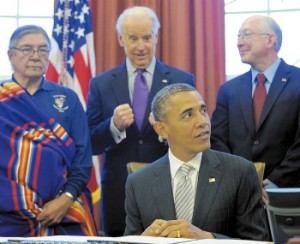
That local consensus was key in moving the project forward, Heinrich said in a telephone interview last week. Without it, action on the federal level often is stalled, he said.
“It’s one of those really special places,” Heinrich said, adding that in the mid- to late 1990s, as director and an outfit guide with the Cottonwood Gulch Foundation, he took kids all over the Southwest, including to raft and explore the Rio Grande Gorge.
That gorge is only a piece of the new national monument, which stretches to the Colorado border. Obama’s proclamation lists the riches found in the area, including canyons, volcanic cones, natural springs and native grasslands.
“The river provides habitat for fish such as the Río Grande cutthroat trout, as well as the recently reintroduced North American river otter,” the proclamation reads. “The Río Grande del Norte is part of the Central Migratory Flyway, a vital migration corridor for birds such as Canada geese, herons, sandhill cranes, hummingbirds and American avocets. Several species of bats make their home in the gorge, which also provides important nesting habitat for golden eagles and numerous other raptor species, as well as habitat for the endangered southwestern willow flycatcher.”
Besides bald eagles and other birds, the area includes Rocky Mountain elk, mule deer, pronghorn and Rocky Mountain bighorn sheep, and rare Gunnison’s prairie dogs, as well as the ringtail, black bear, coyote, red fox, cougar and bobcat, according to the proclamation.
Petroglyphs, some dating as far back as 7,500 B.C., are found concentrated near hot springs in the gorge, along with a number of artifacts tracing ancient habitation. The Rio San Antonio gorge also contains such historic reminders, while San Antonio Mountain is thought to be the source of dacite used to make stone tools, states the proclamation.
Ute Mountain, at 10,000 feet, is the tallest of the extinct volcanic cones that dot the area. Remnants of homes and people who settled the area right after World War I can be found on the slopes of Cerro Montoso, while other artifacts throughout the area mark the passage of Spanish explorers and settlers.
“The Río Grande del Norte has long supported our cultural traditions in northern New Mexico, such as hunting, irrigation and grazing,” said Udall. “As a permanently protected national monument, it will drive even more economic progress and job growth through tourism in communities that desperately need it.”
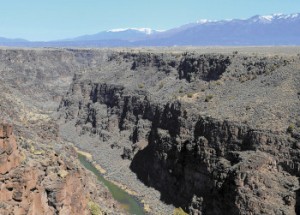
Obama to Sign Expanded Violence Against Women Act
Watch the signing live at 10:55 a.m. PST here,
http://www.whitehouse.gov/live
View the Bill here,
By JOSH LEDERMAN Associated Press
WASHINGTON March 7, 2013 (AP)
President Barack Obama is signing into law a bill extending and expanding domestic violence protections, ushering in a legislative victory for gay rights advocates and Native Americans.
Flanked by domestic-violence survivors, lawmakers, law enforcement officers and tribal leaders, Obama was signing the extension to the Violence Against Women Act in a ceremony Thursday at the Interior Department, which overseas programs for Native Americans. A key provision of the expanded law strengthens protections for victims who are attacked on tribal land.
Vice President Joe Biden, who as a senator wrote and sponsored the original bill in 1994, was also scheduled to speak at the ceremony.
The law strengthens the criminal justice system’s response to crimes against women. White House press secretary Jay Carney called the extension “a very important milestone” that would give law enforcement new tools to respond to domestic violence, sexual assault and human trafficking.
Although the law was renewed twice in the past with little resistance, it lapsed in 2011 when Republicans and Democrats couldn’t agree on a bill to renew it.
The Republican-controlled House rejected a Senate-passed version making clear that lesbians, gays and immigrants should have equal access to the law’s programs. The Senate bill also allowed tribal courts to prosecute non-Indians who attack their Indian partners on tribal lands, giving Native American authorities the ability to go after crimes that federal prosecutors, for lack of resources, often decline to pursue.
In February, House Republicans capitulated and allowed a vote on an almost identical version of the bill. It passed 286-138. It was the third time in two months that House Speaker John Boehner let a Democratic-supported bill reach the floor despite opposition from a majority of his own party — a clear sign that Republicans wanted to put the issue behind them after performing poorly among women in November’s election.
The Violence Against Women Act has set the standard for how to protect women, and some men, from domestic abuse and prosecute abusers and is credited with helping reduce domestic violence incidents by two-thirds since its inception in 1994.
The renewal authorizes some $659 million a year over five years to fund current programs that provide grants for transitional housing, legal assistance, law enforcement training and hotlines. It reauthorizes the Trafficking Victims Protection Act, adds stalking to the list of crimes that make immigrants eligible for protection, and authorizes programs dealing with sexual assault on college campuses and rape investigations.
http://abcnews.go.com/Politics/wireStory/obama-sign-expanded-violence-women-act-1867272
President Obama to issue 2012 Citizen Medal to Billy Mills Lakota Sioux member.
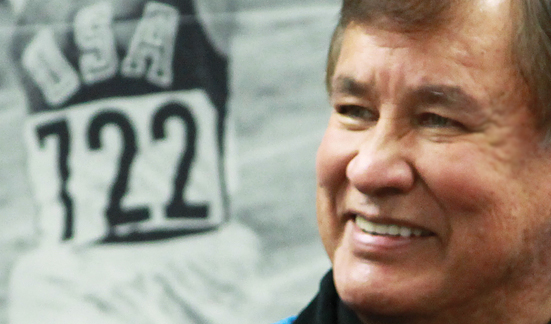
By Monica Brown, Tulalip Writer
President Barack Obama will be honoring civilians today with the second-highest civilian honor—the 2012 Presidential Citizens Medal— in 1969 the Citizens Medal was established to honor American citizens who have performed exemplary deeds of service for their country or their fellow citizens.
Among the list of 13 selected is Billy Mills, an Oglala Lakota. Mills co-founded and serves as the spokesman for Running Strong for American Indian Youth, an organization that supports cultural programs and provides health and housing assistance for Native American communities.
“I am humbled and honored to be recognized by the President in this extraordinary way,” said Billy on the Running Strong for American Indian Youth website. “The most powerful thing you can give to a child is a dream. I hope every child in Indian Country knows what is possible if you follow your dream.”
Mills is most remembered for his unexpected Gold Medal win in the 10,000 meter run during the 1964 Tokyo Olympics. Today, he remains the only American to ever win this event it is is frequently referred to as the greatest Olympic distance race of all time. Afterwards Mills received his Lakota name, “Makoce Te’hila” which means “Loves His Country” or more traditionally “Respects the Earth”.
Today Billy travels over 300 days every year. He visits American Indian communities throughout the U.S. and speaks to American Indian youth about healthy lifestyles and taking pride in their heritage, states the website for running Strong.
Mills along with the other 12 honorees were among a group of 6,000 nominations.
NAFSA applauds President Obama’s nomination of Sally Jewell for Secretary of the Interior
Native American Group Urges Secretary-designate to Protect Government-to-Government Relationship between Tribal Nations and Federal Government
 Native American Financial Services Association
http://www.mynafsa.org/
Native American Financial Services Association
http://www.mynafsa.org/
WASHINGTON, DC (February 8, 2013) – Following President Obama’s announcement earlier this week that he would nominate Sally Jewell, President and CEO of REI, to succeed retiring Secretary Ken Salazar at the helm of the Department of Interior, The Native American Financial Services Association (NAFSA) issued the following statement:
“With so many Department of the Interior bureaus and agencies impacting daily life on Native American reservations, Sally Jewell is an outstanding choice to succeed Secretary Salazar,” said Barry Brandon, Executive Director of NAFSA. “She understands the value of our precious wilderness and how important it is to protect our public lands. It is our hope that she will use her new post as Interior Secretary to continually strengthen the unique government-to-government relationship that our tribes share with the federal government. We applaud her nomination and look forward to working with her.”
The Department of the Interior (DOI) is accountable for the administration and preservation of most federal land and natural resources, as well as the management of programs relating to Native Americans, Alaska Natives, and Native Hawaiians. Included within DOI is the Bureau of Indian Affairs, the oldest bureau in the Interior Department.
The Bureau of Indian Affairs provides services to approximately 1.9 million native peoples on reservations across the United States. Additionally, the bureau manages 55 million surface acres and 57 million acres of subsurface minerals held in trust by American Indians, Indian Tribes, and Alaska Natives. If confirmed by the Senate, Jewell will have immense jurisdiction around Native American life.
Jewell, a former oil company official and outdoor enthusiast, won the 2009 Rachel Carson award from the Audubon Society for work furthering environmental efforts. Jewell is vice chairwoman of the National Parks Conservation Association and additionally serves as a board member of the Mountains to Sound Greenway Trust; a linked network of green spaces, and historic towns recreational opportunities in Washington State.
About NAFSA
The Native American Financial Services Association (NAFSA) formed in 2012 to advocate for Native American sovereign rights and enable tribes to offer responsible online lending products. Through the protection of consumer rights and sovereign immunity, NAFSA provides vital services to tribally operated lenders serving the under-banked with better short term financial services, furthering economic development opportunities in Indian Country.




